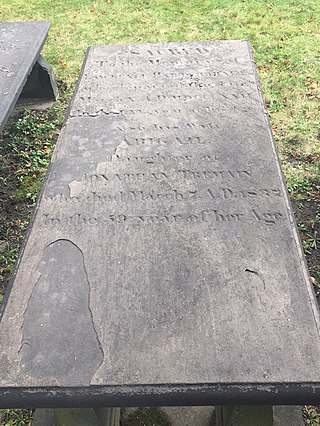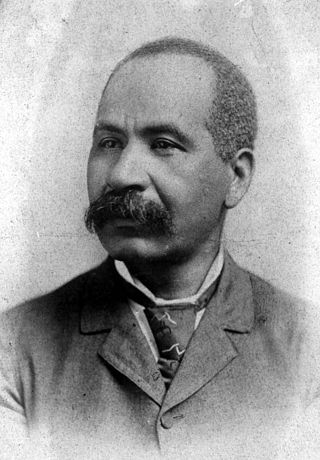This article includes a list of general references, but it lacks sufficient corresponding inline citations .(January 2013) |
John Tucker was an English slave trader for the Royal African Company from London, England.
This article includes a list of general references, but it lacks sufficient corresponding inline citations .(January 2013) |
John Tucker was an English slave trader for the Royal African Company from London, England.
Tucker went to Gbap, Sierra Leone, in 1665 alongside Thomas Corker who was the ancestor of the Sherbro Caulkers, the most notorious slave trading family in the Upper Guinea Coast. John Tucker married a Sherbro princess and together they had many children. The Sherbro Tuckers became a powerful slave trading clan and chiefdom in Gbap and many of them went to university in Europe as early as the 18th century.
In 1694 John Tucker signed the commission for the 1694 voyage of the Amity captained by Thomas Tew.
Sierra Leone first became inhabited by indigenous African peoples at least 2,500 years ago. The Limba were the first tribe known to inhabit Sierra Leone. The dense tropical rainforest partially isolated the region from other West African cultures, and it became a refuge for peoples escaping violence and jihads. Sierra Leone was named by Portuguese explorer Pedro de Sintra, who mapped the region in 1462. The Freetown estuary provided a good natural harbour for ships to shelter and replenish drinking water, and gained more international attention as coastal and trans-Atlantic trade supplanted trans-Saharan trade.

Sherbro Island is in the Atlantic Ocean, and is included within Bonthe District, Southern Province, Sierra Leone. The island is separated from the African mainland by the Sherbro River in the north and Sherbro Strait in the east. It is 32 miles (51 km) long and up to 15 miles (24 km) wide, covering an area of approximately 230 square miles (600 km2). The western extremity is Cape St. Ann. Bonthe, on the eastern end, is the chief port and commercial centre.
The Sherbro people are a native people of Sierra Leone, who speak the Sherbro language; they make up 1.9% of Sierra Leone's population or 134,606. The Sherbro are found primarily in their homeland in Bonthe District, where they make up 40% of the population, in coastal areas of Moyamba District, and in the Western Area of Sierra Leone, particularly in Freetown. During pre-colonial days, the Sherbro were one of the most dominant ethnic group in Sierra Leone, but in the early 21st century, the Sherbro comprise a small minority in the nation. The Sherbro speak their own language, called Sherbro language.
Thomas Canry Caulker, (Sherbro) was born into a prominent African family, and his father ruled as King of Bompey, an African polity established in 1820 in what is now Sierra Leone. Caulker is among an early generation of West Africans sent to England for their education. His father wanted him prepared for demands for government and commerce in his homeland, before the Sierra Leone Protectorate was established by Great Britain. His father's ambition for him was influenced by the evangelical Christianity in the region, introduced largely by British abolitionists.
Thomas Corker was known as an English agent for the Royal African Company on York Island. He married a Sherbro woman and had two sons with her before his early death.
The Tuckers of Sherbro are an Afro-European clan from the Southern region of Sierra Leone. The clan's progenitors were an English trader and agent, John Tucker, and a Sherbro princess. Starting in the 17th century, the Tuckers ruled over one of the most powerful chiefdoms in the Sherbro country of Southern Sierra Leone, centered on the village of Gbap.
Gbap is a small rural fishing town in Nongoba Bullom Chiefdom, Bonthe District in the Southern Province of Sierra Leone. The town is mainly inhabited by the Sherbro people. Gbap is the traditional home of the Sherbro Tuckers Family, descendants of an English slave trader and a Sherbro princess. It is also the birthplace of Patricia Kabbah, former First Lady of Sierra Leone and wife of Ahmad Tejan Kabbah, Sierra Leone's 3rd President.

The Nova Scotian Settlers, or Sierra Leone Settlers, were Black Canadians of African-American descent who founded the settlement of Freetown, Sierra Leone and the Colony of Sierra Leone, on March 11, 1792. The majority of these black American immigrants were among 3,000 African Americans, mostly former slaves, who had sought freedom and refuge with the British during the American Revolutionary War, leaving rebel masters. They became known as the Black Loyalists. The Nova Scotian Settlers were jointly led by African American Thomas Peters, a former soldier, and English abolitionist John Clarkson. For most of the 19th century, the Settlers resided in Settler Town and remained a distinct ethnic group within the Freetown territory, tending to marry among themselves and with Europeans in the colony.
John Kizell was an American immigrant who became a leader in Sierra Leone as it was being developed as a new British colony in the early nineteenth century. Believed born on Sherbro Island, he was kidnapped and enslaved as a child and shipped to Charleston, South Carolina, where he was sold again. Years later, after the American Revolutionary War, during which he gained freedom with the British and was evacuated to Nova Scotia, he eventually returned to West Africa. In 1792, he was among 50 native-born Africans among the 1200 predominantly African-American Black Loyalists resettled in Freetown.

Cape Mesurado, also called Cape Montserrado, is a headland on the coast of Liberia near the capital Monrovia and the mouth of the Saint Paul River. It was named Cape Mesurado by Portuguese sailors in the 1560s. It is the promontory on which African-American settlers established the city now called Monrovia on 25 April 1822.
Sierra Leoneans in the United Kingdom are citizens or residents of the United Kingdom who are of Sierra Leonean descent. In 2001, there were 17,048 Sierra Leonean-born residents of the UK.
Sierra Leonean Americans are an ethnic group of Americans of full or partial Sierra Leonean ancestry. This includes Sierra Leone Creoles whose ancestors were African American Black Loyalists freed after fighting on the side of the British during the American Revolutionary War. Some African Americans trace their roots to indigenous enslaved Sierra Leoneans exported to the United States between the 18th and early 19th century. In particular, the Gullah people of partial Sierra Leonean ancestry, fled their owners and settled in parts of South Carolina, Georgia, and the Sea Islands, where they still retain their cultural heritage. The first wave of Sierra Leoneans to the United States, after the slavery period, was after the Sierra Leone Civil War in the 1990s and early 2000s. According to the American Community Survey, there are 34,161 Sierra Leonean immigrants living in the United States.
Henry Smeathman (1742–1786) was an English naturalist, best known for his work in entomology and colonial settlement in Sierra Leone.

Tombo is a coastal fishing town located on the southern coast of the Western Area Rural District of Sierra Leone. The town is approximately 30 miles (49 km) east of Freetown. The major industry in Tombo is fishing. Other industries in the town include coal mining and farming. Tombo is a major trade and transport hub for fishing boat
York Island is an island in Sierra Leone. It is a small island located 2 km (1.2 mi) to the east of Bonthe, Sherbro Island. It is part of the Bonthe Island Municipality.

Thomas DeSaille Tucker or Thomas DeSaliere Tucker was an African-born lawyer, educator, and missionary. He was the first president of the State Normal College for Colored Students, which eventually became Florida Agricultural and Mechanical University.

Sierra Leone is home to about sixteen ethnic groups, each with its own language. In Sierra Leone, membership of an ethnic group often overlaps with a shared religious identity. According to the 2004 census Temne is the largest ethnic group in Sierra Leone.

The Sierra Leone Creole people are an ethnic group of Sierra Leone. The Sierra Leone Creole people are descendants of freed African-American, Afro-Caribbean, and Liberated African slaves who settled in the Western Area of Sierra Leone between 1787 and about 1885. The colony was established by the British, supported by abolitionists, under the Sierra Leone Company as a place for freedmen. The settlers called their new settlement Freetown. Today, the Sierra Leone Creoles are 1.2 percent of the population of Sierra Leone.
The Gallinas River in Sierra Leone reaches the Atlantic between Cape Saint Ann and Grand Cape Mount.
Richard Canreba Caulker (18??–1901), also known as Canrah Bah Caulker, was ruler of the Bumpe Chiefdom, 1864–1888 and 1894–1901. This area became incorporated into the Sierra Leone Protectorate in 1888, and is now part of the Moyamba District of the independent Sierra Leone nation.